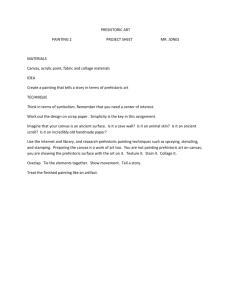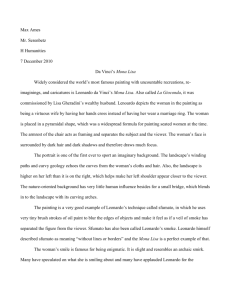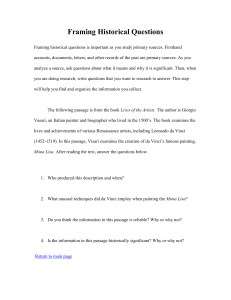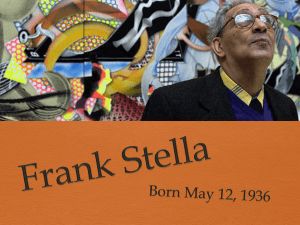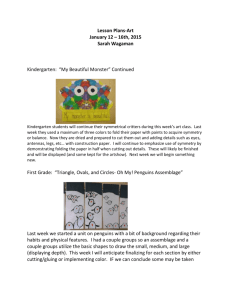Valice - Gaillardia
advertisement
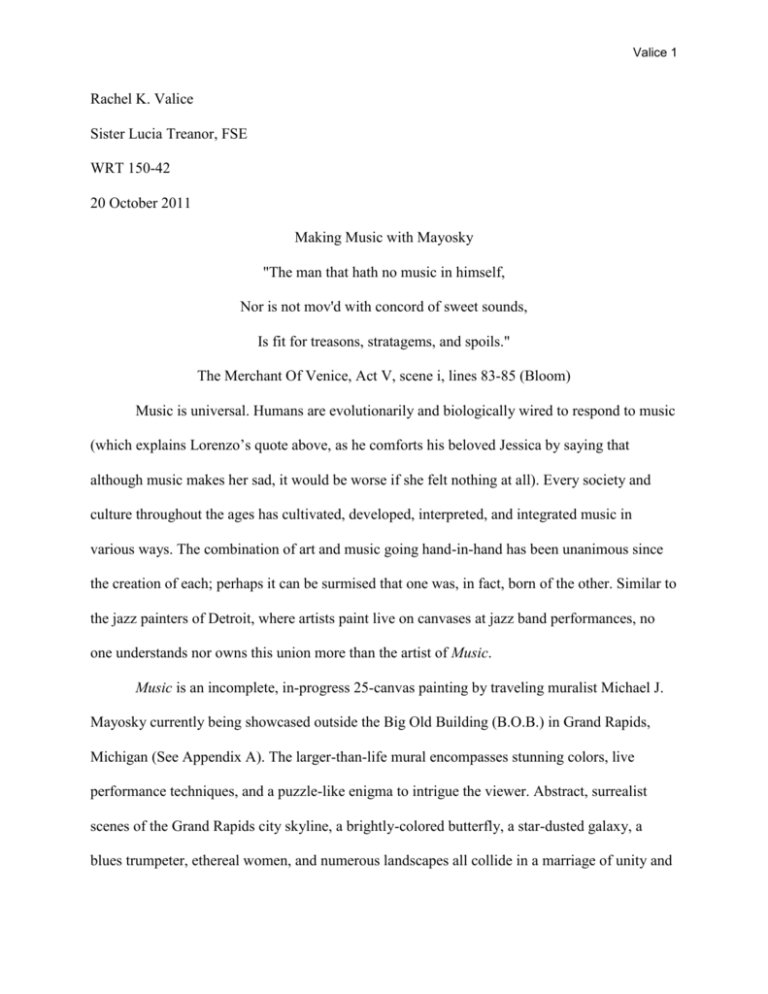
Valice 1 Rachel K. Valice Sister Lucia Treanor, FSE WRT 150-42 20 October 2011 Making Music with Mayosky "The man that hath no music in himself, Nor is not mov'd with concord of sweet sounds, Is fit for treasons, stratagems, and spoils." The Merchant Of Venice, Act V, scene i, lines 83-85 (Bloom) Music is universal. Humans are evolutionarily and biologically wired to respond to music (which explains Lorenzo’s quote above, as he comforts his beloved Jessica by saying that although music makes her sad, it would be worse if she felt nothing at all). Every society and culture throughout the ages has cultivated, developed, interpreted, and integrated music in various ways. The combination of art and music going hand-in-hand has been unanimous since the creation of each; perhaps it can be surmised that one was, in fact, born of the other. Similar to the jazz painters of Detroit, where artists paint live on canvases at jazz band performances, no one understands nor owns this union more than the artist of Music. Music is an incomplete, in-progress 25-canvas painting by traveling muralist Michael J. Mayosky currently being showcased outside the Big Old Building (B.O.B.) in Grand Rapids, Michigan (See Appendix A). The larger-than-life mural encompasses stunning colors, live performance techniques, and a puzzle-like enigma to intrigue the viewer. Abstract, surrealist scenes of the Grand Rapids city skyline, a brightly-colored butterfly, a star-dusted galaxy, a blues trumpeter, ethereal women, and numerous landscapes all collide in a marriage of unity and Valice 2 continuity that commence at the focal point: six paintings, set to the upper left center of the whole composition, that compose the face and neck of Leonardo Da Vinci’s famous work, the Mona Lisa (See Appendix B). When asked why he chose the Mona Lisa as a subject, Mayosky explained that it made his work “unbiased” because it was a “safe” choice. As of October 2011, Music only consists of 19 pieces as a result of the instability of Mayosky’s support frame on which the masterpiece hangs (the uppermost right canvas blew off after a particularly strong wind). The artist was born in Kansas City, Missouri, but presently resides in Springfield, Illinois. He makes a living by traveling across the country, on a commissional basis, to paint murals. He is self-taught and has never received any formal training for his talent. He does, however, require that he is able to paint along with music, saying that “music inspires all of [his] art” (Mayosky Personal Interview). As the music slows, he steadies his hand, and as the music increases in tempo, his painting becomes more frantic. His work echoes later stylings (colors, directions, movement, flow, etc.) of the Surrealist era/movement of painting, such as Roberto Matta’s Elle Loge La Folie (See Appendix C). Part of what makes Music so successful is the process. Half-artistic endeavor and halflive performance, Mayosky creates each new piece in-person at the site, by painting with acryliclatex house paint on a spinning canvas, while music plays. He dances with the painting. The music is often local bands performing live on stage next to Mayosky’s temporary “studio,” or playing from his car radio, which he has been living in since before ArtPrize started, leaving only to shower (Personal Interview). The canvas is able to spin, 360 degrees, because it is mounted on a rotating axis on an easel. This gives the artist the ease and freedom to turn the image every Valice 3 which way as he works, resulting in the carefree and otherworldly rhythm of each individual masterpiece. Mayosky uses smaller pieces to create the bigger picture. If the viewer were to zoom in, one image, or one canvas at a time, each individual component functions well on its own as a work of art. Together, however, the combined visual pieces collaborate in such a way that achieves more than a single canvas would. When asked the meaning of it all, Mayosky replied, “I've been making it up as I go. I'm thinking of each painting separately. They all relate to music and my experiences in some way ” (Personal Interview). The focus point of Mayosky’s Mona Lisa consists of 6 canvases (7, if you count the detailing in the upper left), with each one created by different strokes, colors, and styles. Her neck is abstract. The lower left of her face is a smooth grayscale representation, while the opposite side is colored and less blended. Despite the extravagant differences between each painting, the picture as a whole flows together perfectly as a result of careful planning-ahead, execution, and a vision. Mayosky had described the Mona Lisa as being a universal, “safe” and “nonreligious” focal point for his masterpiece (Mayosky Personal Interview). This indirectly negative, yet passive reasoning leads one to wonder where his true passion lies in making Music. The fact that Mayosky’s use of the Mona Lisa may have been for purely political reasons may shed light on controversy in the art world. It is a wellknown fact that art is open to interpretation, and as such, in a city-wide competition that is open to international artists and citizens, Mayosky’s reasoning for choosing a safe symbol could be more social than artistic. To win the popular vote, the muralist could choose not only the most famous painting in the world, but the most universally appealing and recognizable, and make it his own. Despite this assumption, the artist himself has stated that he did not want to win, on Valice 4 account of his desire to return for ArtPrize in 2012 (Personal Interview). Perhaps it was simply his desire to share his passion for music with the masses that projected his decision. Colors play the most important part in Mayosky’s ambitious ArtPrize entry. The mural hires a number of hues and ranges to gently prod the viewer through the work without boring the eye. Some canvases employ soft, light, neutral, or dull colors, while others are wild and vibrant, bursting with fluorescent, fiery energy. The color scheme of each canvas is also affected by (and affects) what is being depicted; a cloudy landscape is depicted with a multitude of grays and pale, steely blues, while a dancing scarlet-clad woman effortlessly glides through a neon cosmos (a la Alexander Makhlaev’s surreal Katarsis; See Appendix D). The city of Grand Rapids, home to ArtPrize, is portrayed as alive and wonderful as it truly is, with an exciting and broad spectrum of colors and gradients. In light of Mayosky’s usage of saturated color (or lack thereof, depending on the case), different emotions are evoked throughout each section of the work. A pulsating orange butterfly could be uplifting and energetic, while a woman asleep amongst pastel purples and blues could be calming and peaceful. In my opinion, Music is a social and artistic experiment wherein the execution is more valuable than the means to an end. Michael J. Mayosky’s demonstration of music’s inspiration is mesmerizing, as the images he depicts spin in time to the tune. It is a truly revolutionary way to allow lookers-on to feel the performance of art, indulging in not only their sense of sight, but hearing and imagination as well. It always attracts quite a crowd to the courtyard outside the Big Old Building, and each time I’ve visited to witness the work at its various stages of completion, there have been people standing and staring in awe as they snap a photograph of this unusual and unforgettable piece. Valice 5 Appendix A: Music (2011) Michael J. Mayosky Acrylic-latex (house) paint on canvas The B.O.B., Grand Rapids Photograph by Emily Peters Valice 6 Appendix B: Mona Lisa (detail) Leonardo da Vinci (circa 1503-19) Oil on poplar Musee de Louvre, Paris Art Clon. Valice 7 Appendix C: Elle Loge La Folie (1970) Roberto Matta Oil on canvas Private collection, Italy Art Experts, Inc. Appendix D: Katarsis (1993) Alexander Makhlaev Oil on canvas Valice 8 Works Cited Bloom, Harold. Bloom’s Shakespeare Through The Ages: The Merchant of Venice. Infobase Publishing, 2007. Print. Da Vinci, Leonardo. Mona Lisa. c. 1503-19. Musee de Louvre, Paris. Art Clon. Web. 17 October 2011. Makhlaev, Alexander. Katarsis. 1993. Web. 17 October 2011. Matta, Roberto. Elle Loge La Folie. 1970. Private Collection, Italy. Art Experts, Inc. Web. 17 October 2011. Mayosky, Michael J. Music. 2011. The B.O.B., Grand Rapids. 17 October 2011. Mayosky, Michael J. Personal Interview with Arianna Gaw. 6 October 2011.
